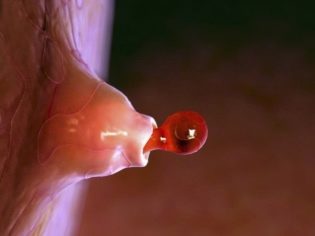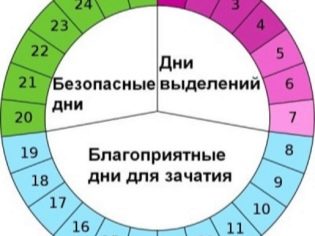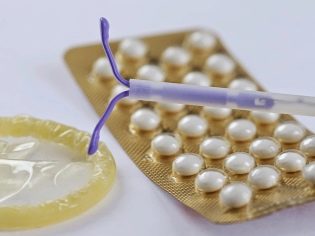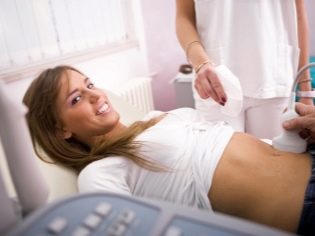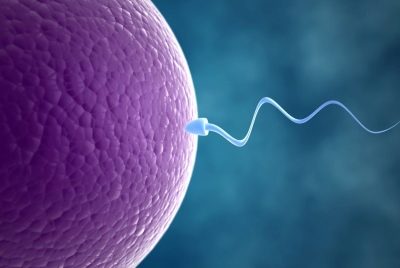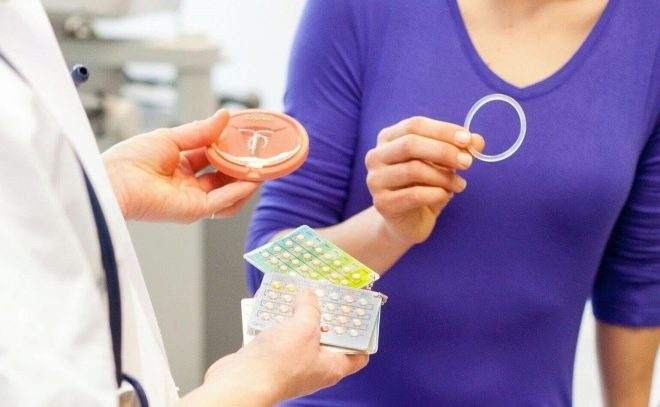What is fertility window? Features of the fertile phase
Female fertility (the ability to conceive, pregnancy and childbirth) differs from male fertility in one crucial aspect: it is a tight time frame. If a healthy man is theoretically and practically ready for fertilization on any day, then for a woman to become pregnant it is important to “get” on the so-called fertile days, into the fertility window. This period is not long, and therefore it is important for a woman to be able to know about its occurrence in advance.
What it is?
The fertile window is the period in the female menstrual cycle, when a woman’s ability to conceive is as high as possible. The chances of becoming pregnant depend on the state of health, age, and a host of other factors, including the fertility level of the partner, but these are all variables. The concept of “fertile window” or “fertile phase” remains unchanged. It is during this time that the woman becomes capable of conception.
A woman can become pregnant only during the period of ovulation. It lasts about an hour. That is how much time it takes the process of release of a ripe egg from the follicle.
This event usually accounts in the middle of the female cycle. During the day, on average, the ovule retains its vitality after entering the fallopian tube, that is, it can be fertilized if during this time period it meets with a live and mobile sperm cell that can penetrate the oocyte membranes so that a new life can arise.
In this way, the peak of the fertile period in the female calendar falls on the day in the middle of the cycle in women. But all the ladies know that the “dangerous” in terms of unplanned conception period in all women's calendars is not limited to one day. What's the matter?
Indeed, the fertile window is the period in which a few days before ovulation and a couple of days after it. This is due to the fertile characteristics of men. The fact is that the egg that came out of the follicle does not make much difference - will the spermatozoa arrive after this, or have they already been waiting for it in the fallopian tube? The viability of sperm cells is not limited to days and averages 2-3 days, and in some men with a high level of fertility, germ cells can maintain their properties in favorable conditions of the female genital tract up to 5-6 days.
Therefore, to prevent unwanted pregnancy, it is recommended to be especially vigilant in advance of ovulation (from about 11–12 until the 16th day of the cycle). This period can be conditionally designated by the term "fertile window".
In order not to get confused, it is customary to count the boundaries of the fertile window according to the formula O = D-14 +/- three days. O is the border of the fertile window, D is the cycle duration for a particular woman. Example: the cycle lasts 30 days. This means that the beginning of the fertile window, when you need to pay attention to contraception or, on the contrary, to start unprotected sex, if you plan to conceive a baby, falls on the 13th day of the cycle, ovulation is expected on the 16th day, and the end of the fertile window - on the 19th day of the cycle.
With a more standard 28-day cycle for women, the beginning of the fertile window falls on the 11th day of the cycle, ovulation usually falls on the 14th day, and the closing of the fertility window falls on the 17th day of the cycle.
For an irregular menstrual cycle, it is recommended to take the average value of the cycle duration for the last 4–6 months and make calculations using this formula.
Definition of the fertile phase - secrets and methods
There are several basic ways to define your own fertile window. Of these, the most common is the above calendar calculation. But you should know that ovulation does not have to come exactly the same day. And then there may be inaccuracies, inaccuracies that can cause unplanned pregnancy.
Ovulation is regulated by hormones. This powerful support of the body does not depend on the will of the woman, that is, it will not be possible to bring ovulation in or out of the way. But it can "move" under the influence of different situations in which the hormonal balance is disturbed:
- fatigue, stress, shocked, shock;
- lack of sleep, exhaustion of the body;
- illness (from exacerbation of chronic ailments to a cold or ARVI);
- change of time zones, flight, climate change.
It means that calendar method is unreliable, you can not rely on it. It only gives an approximate idea of when to expect fertility time.
More accurately set the approximation of ovulation in other ways.
- Ultrasound of the ovaries - usually held on the 5–6th day of the cycle for the evaluation of the fertile prognosis, in order to understand whether it is possible to count on conception in this cycle. If there are signs of maturation of at least five follicles, it is said that the fertile prognosis is favorable. From 10–11 days of the ultrasound cycle shows an increase in the size of the dominant follicle. The closer to ovulation, the more it is.
- Blood test for hormones - about the approach of ovulation says the so-called luteinizing peak: approximately 16-24 hours before ovulation, the concentration of the hormone LH reaches the highest values. The analysis begins to pass with the onset of the fertile window by calendar calculations and ultrasound results.
- At home, help can come ovulation test. There are test strips that are immersed in the urine, there are modern reusable electronic devices that determine not the level of LH, but the level of estrogen in the saliva. The tests do not show the beginning of the fertile window, they are only focused on the approximate day of ovulation (plus or minus a day).
- Temperature method - consists in daily measurement of basal temperature. About the approach of ovulation says the temperature rises above 37.2 degrees. The method itself is uninformative, but can effectively complement home testing with ovulation tests, confirming or disproving their results.
- Symptomatic complex of signs - symptoms that women note as signs of an approaching fertile period. Usually doctors are skeptical of this method, because the objective symptoms of ovulation in medical encyclopedias are not described, they do not exist. Many generations of women, however, claim that the approach of ovulation is guessed by the change in vaginal secretions, they become viscous, stingy, similar to raw chicken egg white.
Almost everyone claims that sexual desire grows significantly, you want intimacy, some have sore breasts, nipples become more sensitive, some have painful sensations at the moment of breaking the follicle on the right or left side in the lower abdomen at the location of the ovaries.
The establishment of a fertile window becomes especially important in the IVF treatment protocol in the natural cycle. It is also important for anyone planning to conceive.
Is pregnancy always possible during the fertile period?
Unfortunately, correct and accurate determination of the fertile window is not the key to a successful pregnancy. In order for conception to take place, it is important that many factors are observed.
- Need a healthy, high-quality egg. With age, the quality of oocytes decreases and the likelihood of pregnancy decreases.
- You need the correct hormonal "maintenance".
- We need a healthy, mobile sperm, which can overcome the long way through the genital tract or wait for the oocyte in the genital tract, demonstrating viability.
After fertilization, the fetus will have another test - implantation, it also needs to be successfully passed, otherwise the pregnancy will not come.
There are many nuances of oocyte maturation. For example, an overripe egg that has entered the fallopian tube with a great delay cannot be fertilized, it is not viable.
Oocytes can not afford to ripen every month, and then the woman has anovulatory cycles. Normally, a young and healthy woman is possible 1-2 times a year, and for women over 35 years old - up to 6 times a year. That is why getting pregnant at 20 is always easier than at 35 and older.
When do you need help from a doctor?
Most healthy reproductive women are able to conceive a child throughout the year in a natural way without the help of medical professionals. If a lady is over 35 years old, then only six months are given to independent attempts - the ovarian reserve is depleted, you need to react earlier. It is after these time periods come out, and pregnancy does not come, you should consult a doctor.
It is very important to do this together with your sexual partner, because according to statistics in 40% of family infertility the reason lies in the reduction of male fertility.
What should be remembered during the fertile window?
If you define the boundaries of your fertile window, start from what goal you want to achieve.
To conceive a child
From the first day of the fertile window, spend unprotected sex with a frequency of once every two days - this will help not to miss the favorable moment. After intercourse, do not rush to get up and run into the shower, lie down, throwing your legs higher - this will contribute to a better passage of sperm through the sexual way. Do not use lubricant, lubricants, before sexual intercourse, do not syringing.
The refusal of coffee, strong tea and chocolate increases the likelihood of successful conception,
To prevent unwanted pregnancy
From the first day of the fertile window, use barrier contraception measures — condoms — if necessary, other contraceptive measures. Do not forget to take hormonal contraceptives in time, do not miss another pill.
Interrupted sexual intercourse during the fertile window in 10% of cases leads to the conception of an unplanned baby. Spermatozoa can be contained in the lubricant, which naturally moisturizes the head of the penis.
Particular attention to contraception should be paid throughout the fertile period before it ends.
The symptoms of ovulation are described in the video below.


